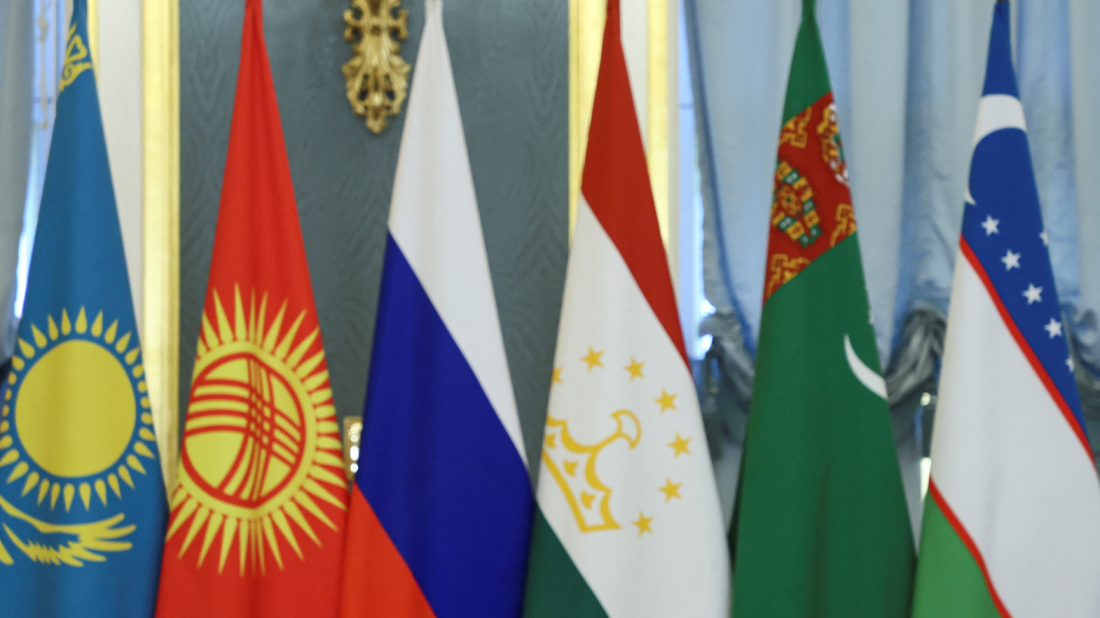Flash floods kill 14 in Morocco’s Safi amid record rainfall
At least 14 people have died and 32 others were injured after flash floods swept through Morocco’s Atlantic coastal city of Safi on Sunday, authorit...

Dushanbe enters one of its busiest diplomatic weeks in recent times as it gears up to host the Commonwealth of Independent States (CIS) heads of state and a Central Asia – Russia meeting. Both events are set to hold from 8 - 12 October in Tajikistan.
In addition, Russian President Vladimir Putin is set to pay an official state visit to the central asian country.
The arrival of leaders from CIS and Central Asian countries, along with accompanying delegations leads up to a week of high-level political engagement.
The city has already entered a state of heightened security. Traffic restrictions have been announced, with street parking temporarily suspended as residents and visitors are advised to avoid using personal vehicles.
The Ministry of Internal Affairs of Tajikistan additionally, has urged citizens not to travel to Dushanbe during these days unless absolutely necessary, citing unprecedented security measures.
Behind the scenes of protocol and ceremony, however, lie more complex dynamics; Russia, under international sanctions and facing increasing isolation, is in need of reliable partners.
Central Asia, once viewed as a traditional sphere of Moscow’s influence, has become a battleground for diplomatic competition, with China, Turkey, the European Union and the Gulf states all seeking to expand their presence.
The Kremlin now finds itself striving not so much to expand its role as to retain what it still holds.
President Putin is travelling with a high-level delegation that includes security, economic and humanitarian officials.
The visit agenda includes a one-on-one meeting with President Emomali Rahmon, followed by expanded bilateral talks.
Discussions are expected to cover a broad range of topics: political cooperation, trade, security, and humanitarian and cultural exchange.
Particular attention will be paid to joint measures in combating terrorism, extremism, drug trafficking and other transnational threats.
Tajikistan remains one of Moscow’s key partners in the region since diplomatic relations between the two countries were established in 1992.
Since then, more than 330 bilateral agreements have been signed as Russia continues to be Tajikistan’s largest trading partner and its main source of foreign investment.
As of mid-2025, Russian investment in the Tajik economy stood at approximately $1.9 billion, with Tajikistan importing Russian goods worth more than $858 million in the first five months of the year alone.
However, the context in which these negotiations are taking place has changed significantly. Central Asia is rapidly broadening its foreign policy horizons.
In June, Astana hosted the "Central Asia – China" summit, where the Belt and Road Initiative and the construction of new railway infrastructure bypassing Russia were discussed.
At the summit also, President Xi Jinping pledged $208 million to support livelihood and development projects across Central Asia.
In April, Samarkand hosted the "Central Asia – European Union" summit, where the EU announced an investment package worth $13.2 billion as part of its Global Gateway strategy.
According to analysts, Vladimir Putin’s visit to Dushanbe may aim to ease tensions in Russia’s relations with Central Asian states.
Statements on new projects, investments and trade initiatives are expected. However, such messages are increasingly seen as diplomatic rhetoric that may lack the backing of real capabilities.
Meanwhile, Dushanbe - like other regional capitals - is pursuing a balanced and pragmatic foreign policy. On one hand, it signals respect for a long-standing partner; on the other, it actively engages in new multilateral initiatives.
This pragmatism has become the norm: Central Asia is no longer placing its bets on a single actor. In this new reality, Russia must fight to retain a role in a region where its dominance is no longer unquestioned or exclusive.
The Oligarch’s Design is an investigative documentary exploring how financial power, political influence and carefully constructed narratives can shape conflict and public perception.
Turkish President Recep Tayyip Erdoğan reiterated his offer to host Ukraine-Russia peace talks in Ankara, at his meeting with Russian President Vladimir Putin. The talks took place on the sidelines of the international Forum for Peace and Trust in Ashgabat, Turkmenistan, on Friday (12 December).
Iranian authorities have seized a foreign tanker carrying more than 6 million litres of smuggled fuel in the Sea of Oman, detaining all 18 crew members on board.
An explosive device found in a vehicle linked to one of the alleged attackers in Bondi shooting has been secured and removed according to Police. The incident left 12 people dead.
Russia’s Human Rights Commissioner Tatyana Moskalkova says the Kyiv authorities have still not provided Moscow with a list of thousands of Ukrainian children it claims were illegally taken to Russia, despite the issue being raised during talks in Istanbul.
Iranian authorities have seized a foreign tanker carrying more than 6 million litres of smuggled fuel in the Sea of Oman, detaining all 18 crew members on board.
The Israeli military said Raed Saed, described as one of the architects of the October 7, 2023 attacks on Israel, was killed on Saturday when a vehicle was hit in Gaza City.
A flash of light followed by the sound of an explosion was observed over Gaza early on Saturday, according to witnesses, as severe winter storms worsened an already dire humanitarian crisis in the territory.
Hundreds of people gathered for a second consecutive week at Tel Aviv’s Hostages Square, on Friday (12 December), to support the family of Master Sgt. Ran Gvili, the last remaining Israeli hostage whose body is believed to be held in Gaza.
Turkish President Recep Tayyip Erdoğan and Russian President Vladimir Putin met for a closed-door discussion on the sidelines of the International Forum for Peace and Trust in Ashgabat, Turkmenistan, on Friday.
You can download the AnewZ application from Play Store and the App Store.

What is your opinion on this topic?
Leave the first comment